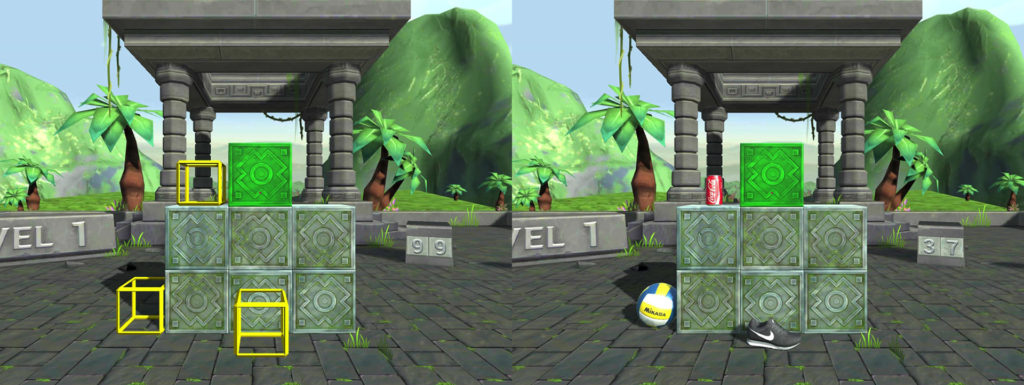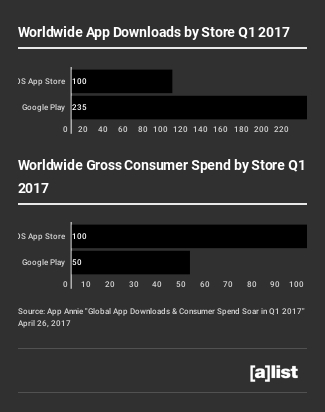Putting the right kind of advertising into VR experiences is one of the keys to helping the technology grow over the long-term, and that’s what Vertebrae (which made the Blair Witch VR Experience) is enabling for developers. The advertising platform released a new SDK on Wednesday, allowing VR developers to add branded placements into their experiences. These could be simple product placements or the interaction could lead to an event, like a pop-out 360-degree video. The system then tracks the engagement for these placements.
Vince Cacace, founder and CEO of Vertebrae, told AListDaily that the SDK currently supports the Unity Engine, since it is used so prevalently in mobile development, but Unreal Engine support will come in the future as the tool becomes platform agnostic. He then went into detail about how the Vertebrae platform will help drive the growth of VR by connecting content creators with advertisers to build placements that fit in naturally with the experience.

How does the new SDK and Vertebrae platform work?
It allows VR content creators an alternative to a paywall or transactional model. Developers can implement our SDK and natively advertise with what’s in their VR environments. They can do so with product placement and 360 video, and those placements can add to the realism of the content without detracting from the end user experience. We have a good pipeline of brands, and now we have a more of a fully shaped platform with all the features needed for bigger campaigns.
Say there’s a tabletop that in a scene. You would create a 3D object on the tabletop, such a beverage or a consumer electronic, and categorize some information about it within the publisher portal so we have some context into what that placement is. What we do on the other side is work with brands. Through the campaign manager, we can target lists of those placements throughout the network and bring live ads into that environment. The ad could also be a 360 video, which could show up before or during the experience—whatever the publisher chooses—and we pay publishers at the end of the month.
How does the Vertebrae platform differ from what developers already do?
We spent a lot of time working on the user experience. We’re a founding member of the IAB Tech Lab, focused on AR and VR ad units and formats. That’s what we’ve devoted a lot of R&D to over the past year-and-a-half. Providing a native option is a differentiator in terms of both the ability to insert an ad and to have a more refined user experience than just throwing something into a piece of content. On the 360 video side, we have a good user experience that’s built for VR. We’re not just putting 2D videos into a VR environment.
The other differentiator is that we have a good base of brands and agencies in a pipeline of advertisers that are interested in VR content. Technology aside, that’s another missing link. It’s not easy to find the right advertiser for a specific piece of content, and that’s what we’ve built our business around.
Do you still believe that gaze-based interaction is important to the branded VR experience?
Definitely. There’s still a lot of questions in the traditional ad industry about verification and how we know whether somebody saw an ad. We found that gaze is a good indicator, and we’re able to tell exactly how many times people saw an ad, how long they looked at it, and how close they were to it. All those things start to come into play, and we’ve noticed a good reception because there isn’t really a concept of fraud. We have exact data.
Is there a difference between how the platform works with mobile VR headsets compared to premium ones?
We’re very focused on mobile VR—we see a lot of our scale coming from mobile. From a tracking perspective, it’s very similar, except you don’t have the distance metrics. You can do a lot more in a premium room scale environment with 360 degrees of freedom. With mobile VR, it’s more gaze-based.
Do you think the platform will drive the creation of more free-to-play VR games?
I think the answer is yes. What I realize is that—especially on mobile platforms—people don’t want to pay for every experience. They don’t want to pay to watch 360 videos. We definitely see a free-to-play ecosystem that is ready to emerge in mobile VR, and we think that this will help support that. On the other side, we also think that it’s possible for premium developers to double-dip, in terms of doing product placement within their experiences, if it fits the context and the narrative.

Can this SDK benefit VR livestreaming events?
Yes, we’ve done some tests with that. Supporting 360 livestreams of sports, music and other events is something that we’re very interested in. We’ve seen the integration work in a couple of different ways. Imagine a skybox environment when you’re watching a sporting event, or a branded skybox behind you. At the same time, you could have 360 ads come in during a commercial break. At music events, you could have a menu screen takeover with some placed products, and maybe a virtual merchandise booth with branded products while there’s branding on the stage. I definitely see a lot of opportunities in that space.
What are your long-term goals with the platform?
The ultimate goal is to add a monetization layer that doesn’t suck for developers. We think that VR is the perfect medium—providing a happy balance between advertisers, content creators and consumers. We’ve built a piece of technology that we’re very proud of and we want to further distribute it out into the ecosystem. Our long-term focus will probably change according to how the market reacts to VR in two or three years, but the goal will always be to continue to find ways to cleverly insert ads in ways that benefit consumers, creators and advertisers.






